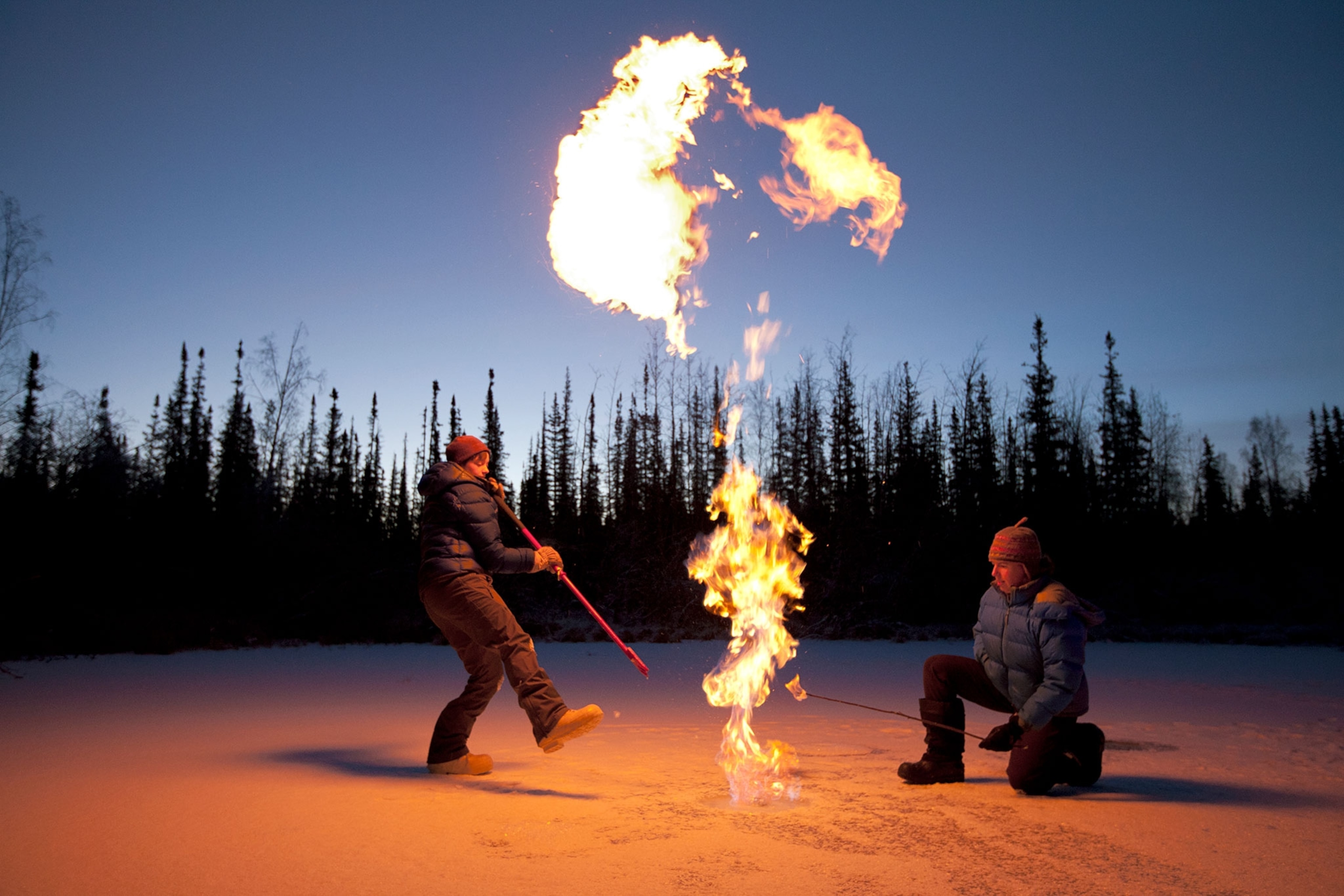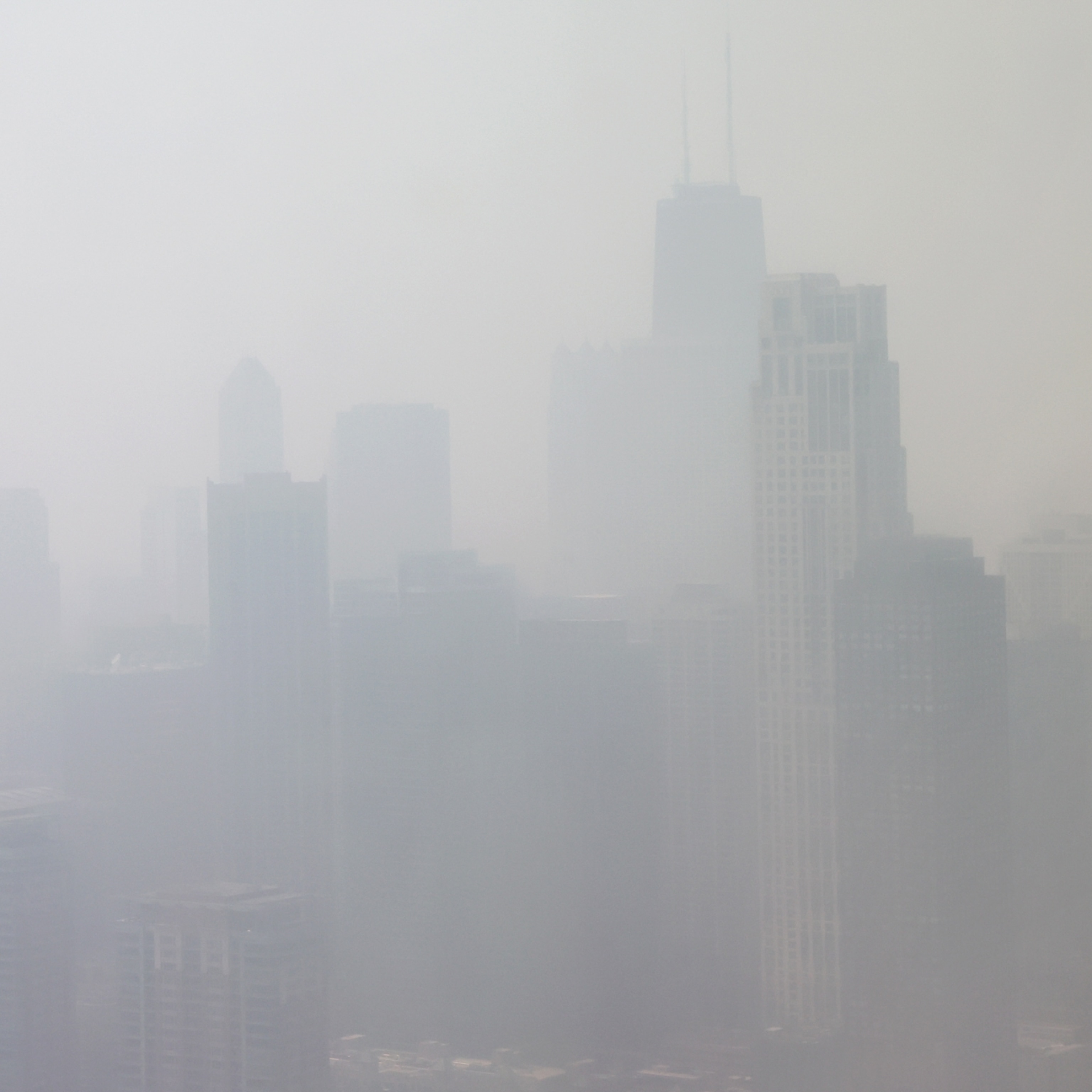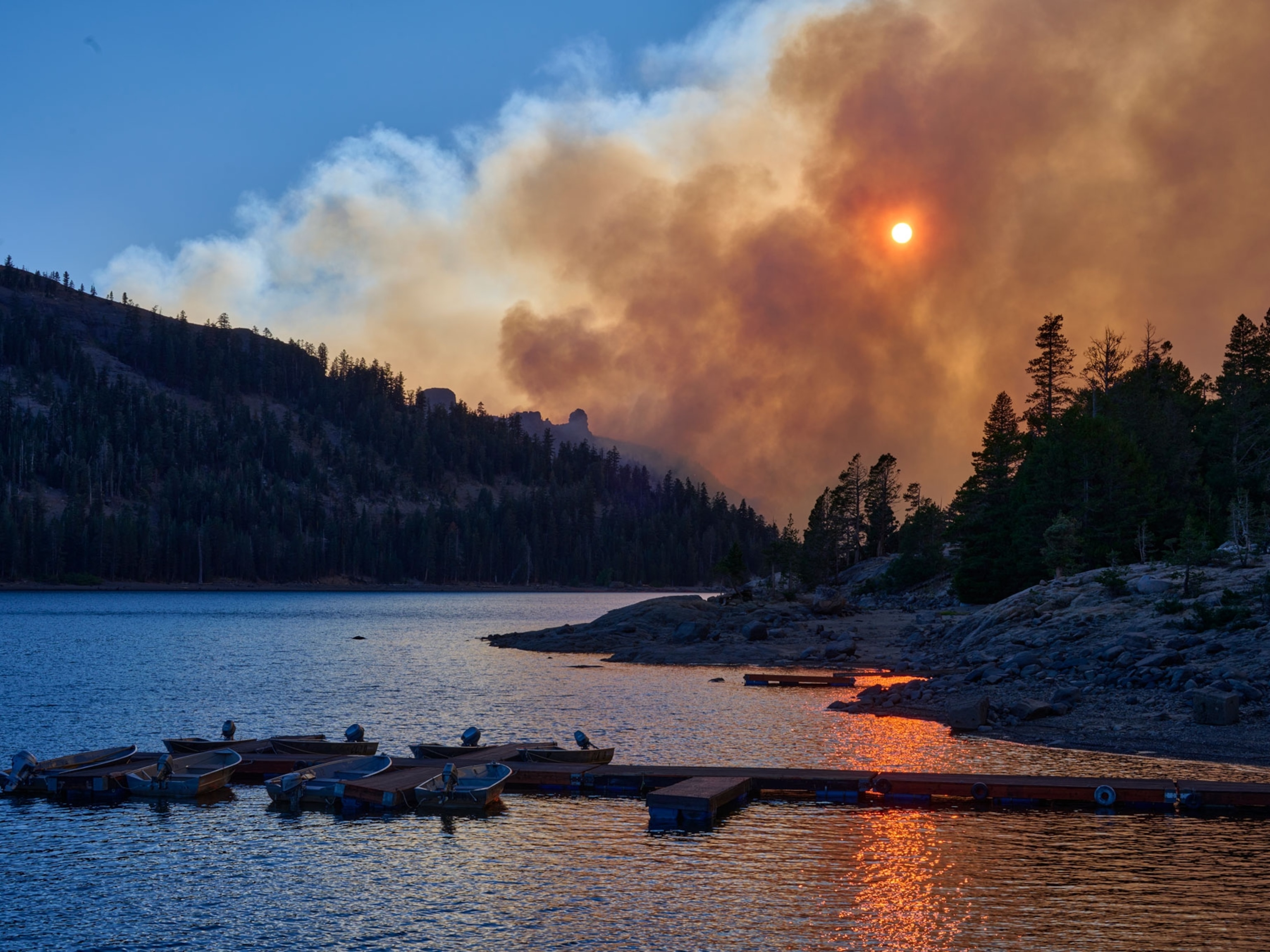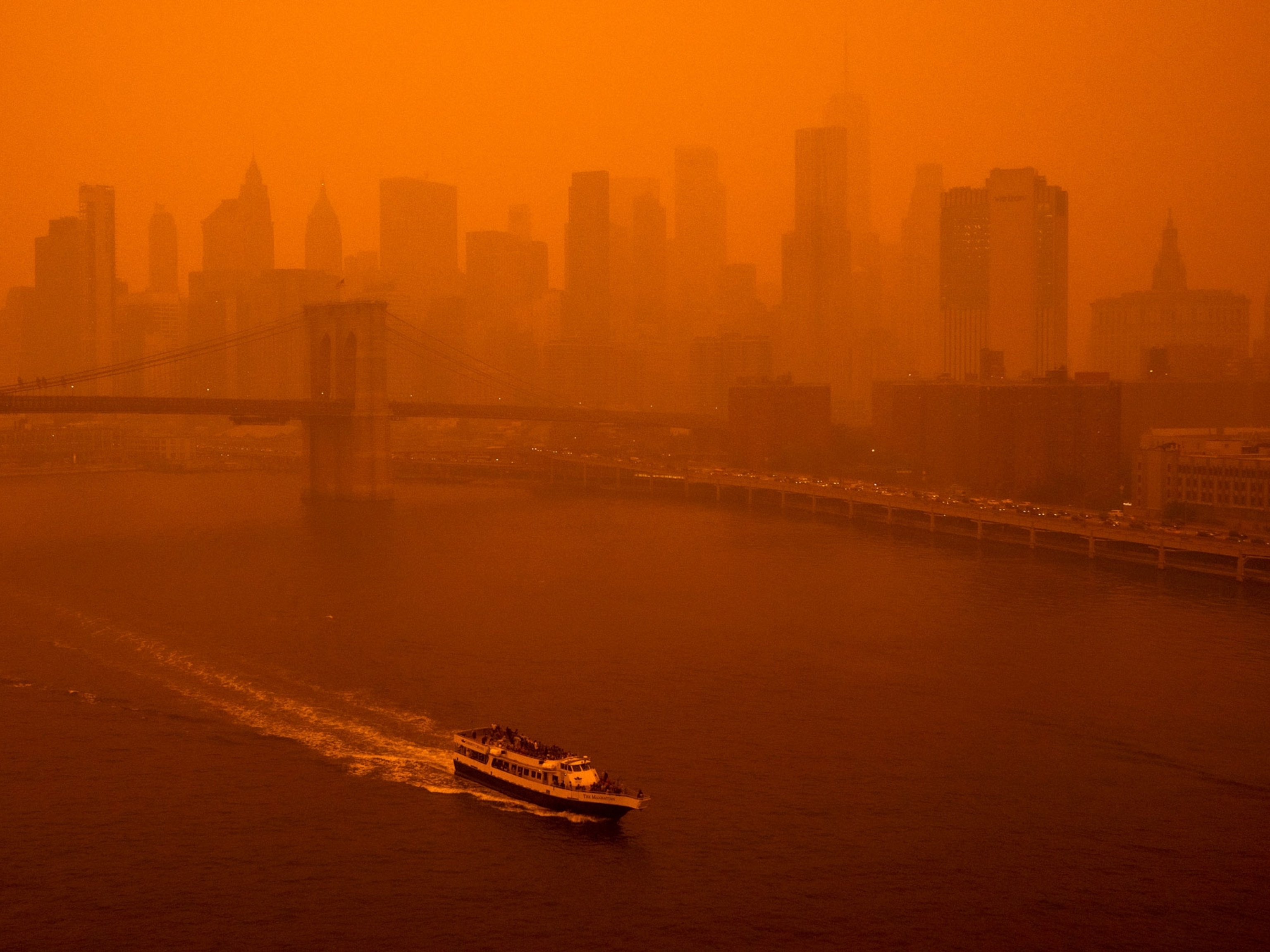
Methane, explained
Cows and bogs release methane into the atmosphere, but it's by far mostly human activity that's driving up levels of this destructive greenhouse gas.
Every time a cow burps or passes gas, a little puff of methane wafts into the atmosphere.
Each of those puffs coming out of a cow’s plumbing, added together, can have a big effect on climate because methane is a potent greenhouse gas—about 28 times more powerful than carbon dioxide at warming the Earth, on a 100-year timescale, and more than 80 times more powerful over 20 years. The effects aren’t just hypothetical: Since the Industrial Revolution, methane concentrations in the atmosphere have more than doubled, and about 20 percent of the warming the planet has experienced can be attributed to the gas.











There's not that much methane in the atmosphere—about 1,800 parts per billion, about as much as two cups of water inside a swimming pool. That’s about 200 times less concentrated in the atmosphere than carbon dioxide, the most abundant and dangerous of the greenhouse gases. But methane’s chemical shape is remarkably effective at trapping heat, which means that adding just a little more methane to the atmosphere can have big impacts on how much, and how quickly, the planet warms.
Methane is a simple gas, a single carbon atom with four arms of hydrogen atoms. Its time in the atmosphere is relatively fleeting compared to other greenhouse gases like CO2—any given methane molecule, once it’s spewed into the atmosphere, lasts about a decade before it's cycled out. That’s a blip compared to the centuries that a CO2 molecule can last floating above the surface of the planet. But there are many sources of methane, so the atmospheric load is constantly being regenerated—or increased.
Methane’s sources
Today, about 60 percent of the methane in the atmosphere comes from sources scientists think of as human caused, while the rest comes from sources that existed before humans started influencing the carbon cycle in dramatic ways.
Most of methane’s natural emissions come from a soggy source: wetlands, which includes bogs. Many microbes are like mammals in that they eat organic material and spit out carbon dioxide—but many that live in still, oxygen-deprived spots like waterlogged wetland soils produce methane instead, which then leaks into the atmosphere. Over all, about a third of all the methane floating in the modern atmosphere comes from wetlands.
There are a variety of other natural methane sources. It seeps out of the ground naturally near some oil and gas deposits and from the mouths of some volcanoes. It leaks out of thawing permafrost in the Arctic and builds up in the sediments under shallow, still seas; it wafts away from burning landscapes, entering the atmosphere as CO2; and it is produced by termites as they chow through piles of woody detritus. But all of these other natural sources, excluding wetlands, only make up about ten percent of the total emissions each year.
Human sources of methane
Today, human-influenced sources make up the bulk of the methane in the atmosphere.
Cows and other grazing animals get a lot of attention for their methane-producing belches and releases. Such grazers host microbes in their stomachs, gut-filling hitchhikers that help them break down and absorb the nutrients from tough grasses. Those microbes produce methane as their waste, which wafts out of both ends of cows. The manure that cattle and other grazers produce is also a site for microbes to do their business, producing even more methane. There are 1.4 billion cattle in the world, and that number is growing as demand for beef and dairy increases; together with other grazing animals, they contribute about 40 percent of the annual methane budget.
Other agricultural endeavors pump methane into the atmosphere, too. Rice paddies are a lot like wetlands: When they’re flooded, they’re filled with calm waters low in oxygen, which are a natural home for methane-producing bacteria. And some scientists think they can see the moment when rice production took off in Asia, about 5,000 years ago, because methane concentrations—recorded in tiny bubbles of ancient air trapped in ice cores in Antarctica—rose rapidly.

Methane also leaks into the atmosphere at gas and oil drilling sites. There are strict rules in place in many states and countries about how much leakage is allowed, but those rules have proven difficult to enforce. Recent studies suggest that wells in the U.S. alone are producing about 60 percent more methane than previously estimated by the Environmental Protection Agency. Worldwide, the energy sector contributes about a quarter of the annual methane budget.
Another major source? Waste. Microbes in landfills and sewage treatment centers chomp through the detritus humans leave behind and in the process pump out tons of methane each year—about 14 percent of the U.S.’s annual footprint.
Methane's impact on climate, past and future
Methane may also have been the cause of rapid warming events deep in Earth’s history, millions of years ago. Under high pressure, like the pressures found deep at the bottom of the ocean, methane solidifies into a slush-like material called methane hydrate. Vast amounts of methane are “frozen” in place at the bottom of the sea in this chemical state, though the exact amounts and locations are still being studied. The hydrates are stable unless something comes along to disturb them, like a plume of warm water.
A massive warming event that occurred about 55 million years ago may have been kicked off by destabilized hydrates, some scientists think. Methane percolated up from the seafloor into the atmosphere, flooding it with the heat-trapping gas and forcing the planet to warm drastically and quickly.
In the modern atmosphere, methane concentrations have risen by more than 150 percent since 1750. It’s not clear whether this rise will continue, or at what rate, but the IPCC warns that keeping methane emissions in check is necessary in order to keep the planet from warming further.
Related Topics
You May Also Like
Go Further
Animals
- Octopuses have a lot of secrets. Can you guess 8 of them?
- Animals
- Feature
Octopuses have a lot of secrets. Can you guess 8 of them? - This biologist and her rescue dog help protect bears in the AndesThis biologist and her rescue dog help protect bears in the Andes
- An octopus invited this writer into her tank—and her secret worldAn octopus invited this writer into her tank—and her secret world
- Peace-loving bonobos are more aggressive than we thoughtPeace-loving bonobos are more aggressive than we thought
Environment
- This ancient society tried to stop El Niño—with child sacrificeThis ancient society tried to stop El Niño—with child sacrifice
- U.S. plans to clean its drinking water. What does that mean?U.S. plans to clean its drinking water. What does that mean?
- Food systems: supporting the triangle of food security, Video Story
- Paid Content
Food systems: supporting the triangle of food security - Will we ever solve the mystery of the Mima mounds?Will we ever solve the mystery of the Mima mounds?
- Are synthetic diamonds really better for the planet?Are synthetic diamonds really better for the planet?
- This year's cherry blossom peak bloom was a warning signThis year's cherry blossom peak bloom was a warning sign
History & Culture
- Strange clues in a Maya temple reveal a fiery political dramaStrange clues in a Maya temple reveal a fiery political drama
- How technology is revealing secrets in these ancient scrollsHow technology is revealing secrets in these ancient scrolls
- Pilgrimages aren’t just spiritual anymore. They’re a workout.Pilgrimages aren’t just spiritual anymore. They’re a workout.
- This ancient society tried to stop El Niño—with child sacrificeThis ancient society tried to stop El Niño—with child sacrifice
- This ancient cure was just revived in a lab. Does it work?This ancient cure was just revived in a lab. Does it work?
- See how ancient Indigenous artists left their markSee how ancient Indigenous artists left their mark
Science
- This 80-foot-long sea monster was the killer whale of its timeThis 80-foot-long sea monster was the killer whale of its time
- Every 80 years, this star appears in the sky—and it’s almost timeEvery 80 years, this star appears in the sky—and it’s almost time
- How do you create your own ‘Blue Zone’? Here are 6 tipsHow do you create your own ‘Blue Zone’? Here are 6 tips
- Why outdoor adventure is important for women as they ageWhy outdoor adventure is important for women as they age
Travel
- Slow-roasted meats and fluffy dumplings in the Czech capitalSlow-roasted meats and fluffy dumplings in the Czech capital
- Want to travel like a local? Sleep in a Mongolian yurt or an Amish farmhouseWant to travel like a local? Sleep in a Mongolian yurt or an Amish farmhouse
- Sharing culinary traditions in the orchard-filled highlands of JordanSharing culinary traditions in the orchard-filled highlands of Jordan







